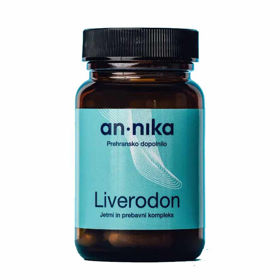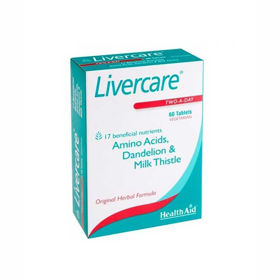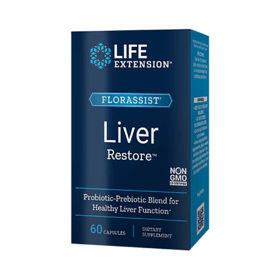Vprašanje stranke:
Kakšni so simptomi žolčnih kamnov? Vprašanje anonimne stranke
Odgovor farmacevta:
Žolčni kamni so trdi delci, ki se tvorijo v žolčniku, majhnem organu pod jetri, ki shranjuje žolč. Žolč je prebavna tekočina, ki pomaga pri prebavi maščob. Žolčni kamni se lahko razlikujejo po velikosti in sestavi, najpogostejši pa so holesterolni kamni in pigmentni kamni, ki nastanejo zaradi presežka bilirubina.
Simptomi nastalih žolčnih kamnov se lahko močno razlikujejo glede na velikost, število in mesto kamnov, pa tudi glede na to, ali povzročajo zapore ali okužbe.
Najpogostejši simptom žolčnih kamnov je bolečina, znana kot žolčni napad. Ta bolečina se običajno pojavi v zgornjem desnem delu trebuha, lahko pa se širi proti hrbtu ali desnemu ramenu. Bolečina se pogosto pojavi nenadoma in je lahko zelo intenzivna. Napadi bolečine se pogosto pojavijo po obroku, zlasti po obrokih, bogatih z maščobami. Bolečina lahko traja od nekaj minut do nekaj ur.
Poleg bolečine lahko žolčni kamni povzročijo še druge simptome. Med njimi so slabost in bruhanje, ki sta pogosto povezana z žolčnimi napadi. Pogosto se pojavi tudi napihnjenost, občutek polnosti ali neugodja v trebuhu. Nekateri ljudje lahko občutijo prebavne motnje, kot so zgaga, plini in občutek nelagodja po obrokih.
Če žolčni kamen povzroči zaporo žolčnih vodov, lahko pride do resnejših simptomov. Zapore lahko vodijo v vnetje žolčnika (holecistitis), kar povzroča hude bolečine, vročino in mrzlico. Zapore lahko povzročijo tudi zlatenico, kar pomeni, da koža in beločnice oči postanejo rumenkaste. To se zgodi zaradi nabiranja bilirubina v krvi. Temen urin in svetlo blato sta lahko znaka, da žolč ne doseže prebavnega trakta zaradi zapore.
V redkih primerih lahko žolčni kamni povzročijo vnetje trebušne slinavke (pankreatitis), kar povzroča hude bolečine v zgornjem delu trebuha, ki se pogosto širijo proti hrbtu, in je pogosto spremljano s slabostjo, bruhanjem in vročino.
Ali vsi žolčni kamni bolijo?
Ne, vsi žolčni kamni ne povzročajo bolečin. Dejansko ima veliko ljudi žolčne kamne, ne da bi sploh vedeli, saj so pogosto asimptomatski. Te kamne imenujemo "tihi" žolčni kamni. Tihi žolčni kamni običajno ne povzročajo nobenih težav in ne zahtevajo zdravljenja. Bolečine in simptome povzročajo žolčni kamni, ko blokirajo žolčne kanale ali povzročijo vnetje žolčnika.
Tukaj je nekaj situacij, v katerih žolčni kamni lahko povzročajo bolečino:
- Blokada žolčnega kanala: če žolčni kamen blokira cistični kanal (ki vodi iz žolčnika) ali skupni žolčni kanal (ki vodi žolč v tanko črevo), lahko to povzroči žolčni napad ali žolčne kolike. To je huda bolečina v zgornjem desnem delu trebuha, ki se lahko širi proti hrbtu ali desnemu ramenu.
- Vnetje žolčnika (holecistitis): ko kamen ostane v cističnem kanalu, lahko povzroči vnetje in okužbo žolčnika. To stanje povzroča hude in vztrajne bolečine, vročino, slabost in bruhanje.
- Vnetje žolčnih vodov (holangitis): če žolčni kamen blokira skupni žolčni kanal in povzroči vnetje ali okužbo, lahko pride do holangitisa. Simptomi vključujejo hude bolečine v trebuhu, zlatenico (rumeno obarvanost kože in oči) in vročino.
- Pankreatitis: žolčni kamen, ki se premakne v kanal trebušne slinavke, lahko povzroči vnetje trebušne slinavke, poznan kot pankreatitis. To povzroča hude bolečine v zgornjem delu trebuha, ki se lahko širijo v hrbet, ter slabost, bruhanje in vročino.
Čeprav vsi žolčni kamni ne povzročajo bolečin, je pomembno spremljati morebitne simptome, ki bi lahko nakazovali na zaplete. Ljudje z asimptomatskimi žolčnimi kamni običajno ne potrebujejo zdravljenja, vendar je tistim, ki imajo simptome ali zaplete, pogosto priporočena kirurška odstranitev žolčnika (holecistektomija) ali druga zdravljenja, odvisno od resnosti in narave njihovih težav.
Če opazite simptome, kot so hude bolečine v trebuhu, zlatenica, vročina ali slabost, je priporočljivo, da se posvetujete z zdravnikom.
Zanimivo branje: Žolčnik bolečine








 Facebook
Facebook
 Instagram
Instagram
 info@moja-lekarna.com
info@moja-lekarna.com

